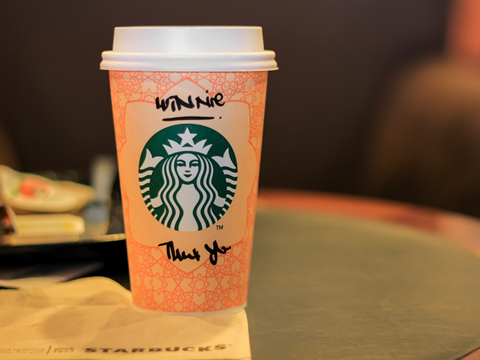
Hoping to entice consumers back to stores and improve their on-site experience, Starbucks now allows baristas to handwrite messages on to-go coffee cups, serves ‘for here’ beverages in ceramic cups, and offers free refills in its cafés.
These developments fall under the ‘Back to Starbucks’ campaign, which hopes, in part, to “re-establish Starbucks as the community coffeehouse” after North American and U.S. global comparable store sales declined by 4% in Q1 fiscal year 2025. Comparable transactions fell by 6%, although this was partially offset by a 3% increase in average ticket.
At the company’s latest earnings call, chairman and CEO Brian Niccols also blamed the mobile ordering system, specifically its lack of sequencing, for causing congestion in-store and “[overwhelming] the production experience to the point where we can no longer provide a great service experience.”
He aims to “elevate the café experience for those who choose to stay and work” by offering free refills – whether in ceramic mugs and glasses served by staff or a clean refillable cup brought from home – for hot and iced brewed coffee and tea. This service was previously limited to Starbucks Rewards members, but will now be available to all.
Meanwhile, printed labels replaced handwritten notes on takeaway coffee cups under Starbucks’ COVID-19 policy reversals. By reintroducing the practice, Niccol hopes to provide consumers with a “handcrafted beverage” that “makes Starbucks a unique experience” by building a rapport with the server.
An accompanying advertisement sees a Starbucks server write messages like ‘Happy BDay’, ‘Shine On’, ‘Good luck’, and ‘Let’s goooo!’ on a paper cup, as well as drawing a shooting star and a smiley face.
Business Insider cites an internal memo suggesting that “the expectation will shift to include a personalized note on all [single-use] cups” from 24th February. However, one Starbucks partner has reportedly raised concerns that this would have a “moderate to significant impact” on waiting times, which Niccol intends to reduce to four minutes or less.
Additionally, the move has been criticized as a “gimmick” and “nostalgia play” that fails to address bigger (alleged) issues, such as insufficient seating areas and undertrained staff.
Last year, we reported on Starbucks’ roadmap towards more sustainable coffee cup consumption. The company emphasized that, at the time, all its company-owned stores in the U.S. with café seating provided ‘for-here’ cups to drink on the premises.
It was reportedly in the process of trialling returnable cups for takeaway orders – aligning with its goals to achieve 100% compostable, recyclable, or reusable cups by 2030. It also claimed to offer reuse for café, drive-thru, and mobile orders at all company-operated and participating licensed stores in the United States and Canada.
Since then, it has joined other big brands like PepsiCo and KFC in trialling reusable cups as default takeaway packaging across its restaurants in Petaluma, California – an effort undertaken in collaboration with Closed Loop Partners. The resultant baseline data will be used to gauge the cups’ viability at scale.
It has also joined forces with Huhtamaki to trial compostable cups for cold beverages in select U.S. locations in California and Minnesota, aligning with incoming Extended Producer Responsibility laws.
If you liked this story, you might also enjoy:
Reuse vs. single use – which is better for the environment?
Sustainable Innovation Report 2025: Current trends and future priorities
What can the world learn from South Korea’s world-leading performance in plastics circularity?

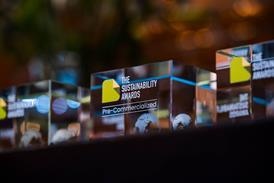
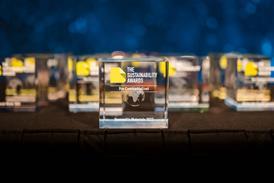
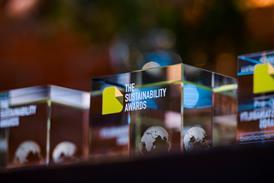
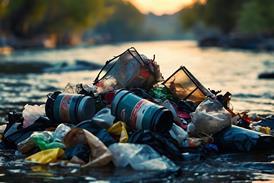
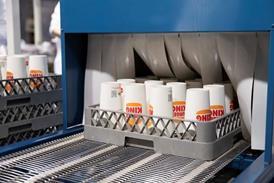












No comments yet